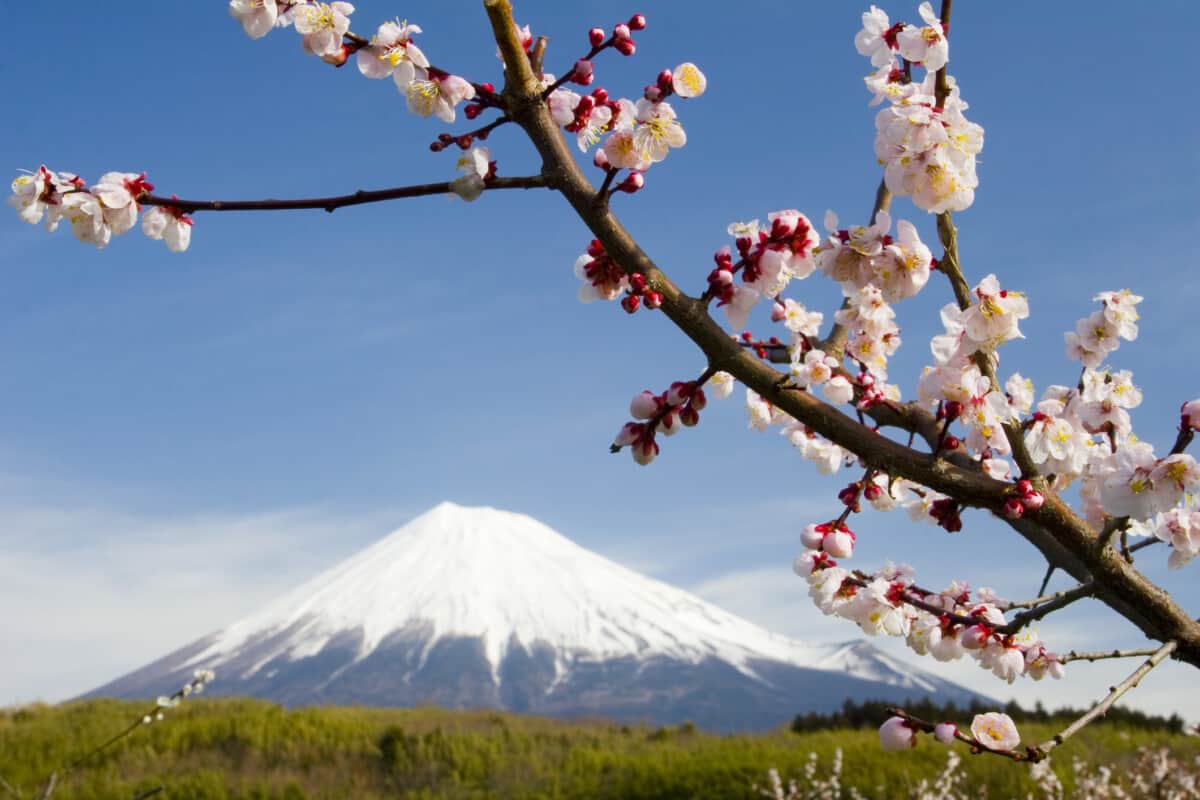Alongside the cherry blossoms, plum blossoms are also a big attraction in Japan in the spring. The plum blossom is the first sign of the upcoming spring season and attracts tourists from all over the world.
Although many people all over the world are familiar with the popularity of seeing the cherry blossoms bloom in the spring in Japan, people are not so familiar with just how popular the plum blossoms are in Japan.
The plum blossoms are the first sign that the winter period is ending and that the spring season is beginning, signaling the coming of warmer months.
Plum blossoms bloom for around a month from late winter to early spring (from February to March), but cherry blossoms bloom for about 7–10 days from late March to early April (in and around The Tokyo Metropolitan area).
In this article, we will be talking you through the differences between plum blossoms and cherry blossoms, the meaning behind the plum blossoms, how they are celebrated, and the best places to see them in bloom.
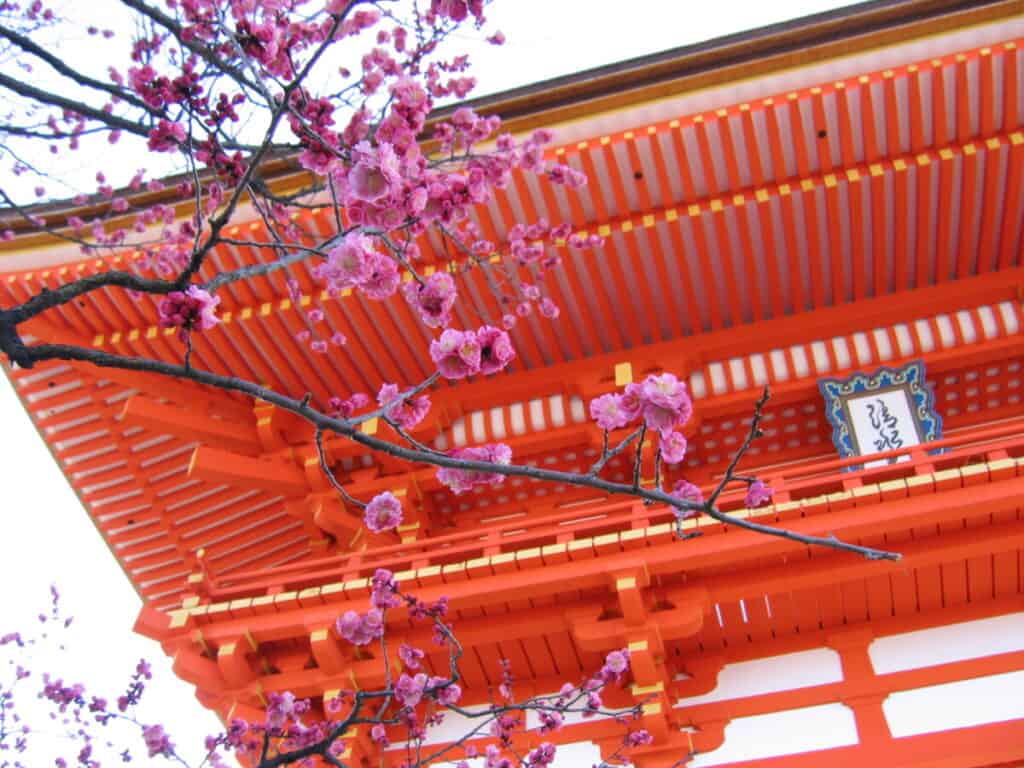
What is the difference between a cherry blossom and a plum blossom?
As their names might suggest the cherry blossom and the plum blossom are flowers on completely different trees: the cherry blossom from the ornamental cherry tree and the plum blossom from the plum blossom tree.
However, both are flowers that bloom in spring and make for very popular tourist attractions when they come into bloom. But although they both bloom in the spring, they do so at different times.
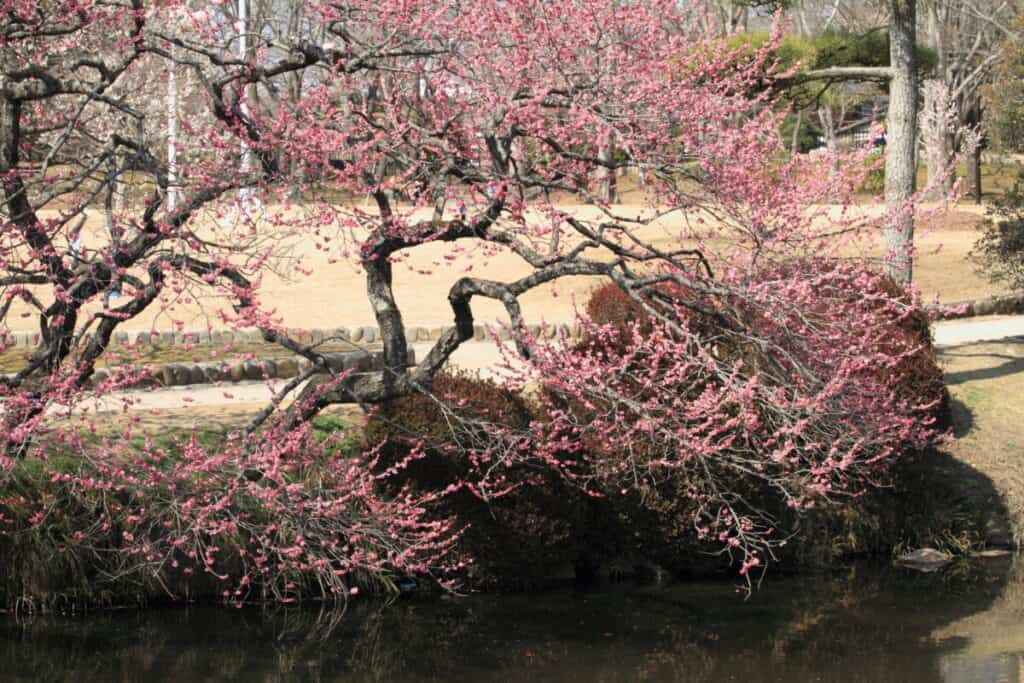
The plum blossom is the first to bloom and typically marks the very first moments of spring, signaling the end of the winter months. The plum blossom can appear as early as the middle of February and is referred to in Japanese by the word “ume”.
The cherry blossom blooms later in the spring season and its peak is in April. The Japanese word for cherry blossom is “sakura”.
If you are not sure which of the two you are looking at, as there are many variations of sakura in Japan, then you may be able to notice a plum blossom by the purple or red leaves that surround the flowers.
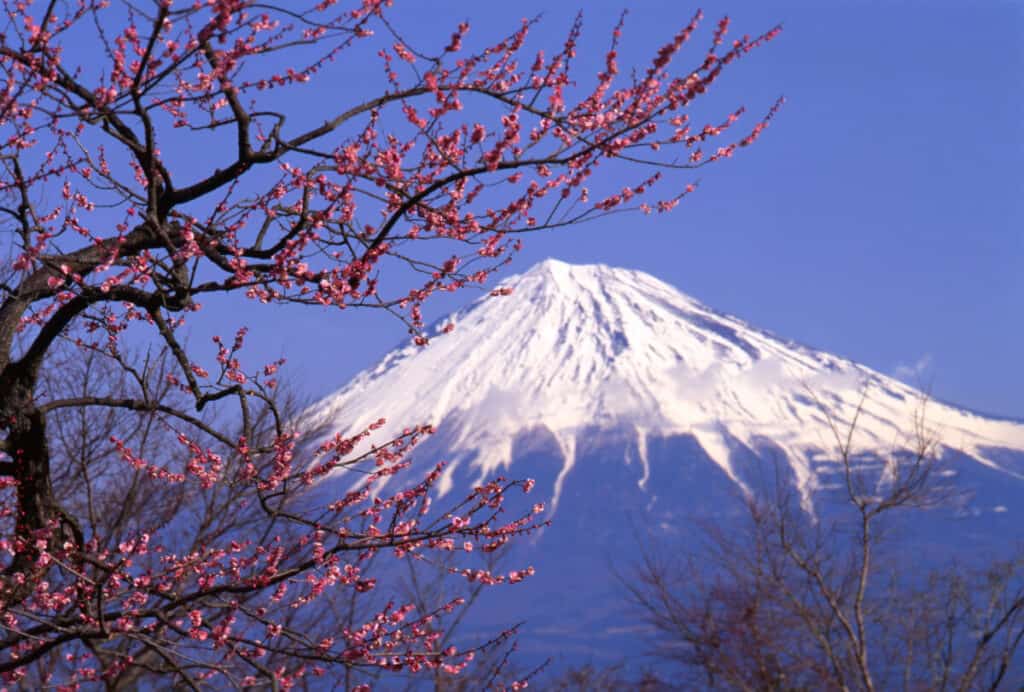
Additionally, the fruiting varieties on the plum blossom trees are another giveaway, although this may not be as noticeable when the flowers first bloom. These plums are typically sourer than those grown in the West.
Although the plums themselves smell very sweet their taste is quite sour.
The bark of the plum blossom is also much darker than that of the cherry blossom, making it much more distinctive. Additionally, the petals are rounded at the ends and not split, like those of the cherry blossom.
What is the meaning behind the plum blossom?
Just like many things in Japan, there is a special meaning behind the plum blossom. The appearance of the plum blossom as one of the first signs of spring gives the flower a sense of hope and longing for the warmer months.
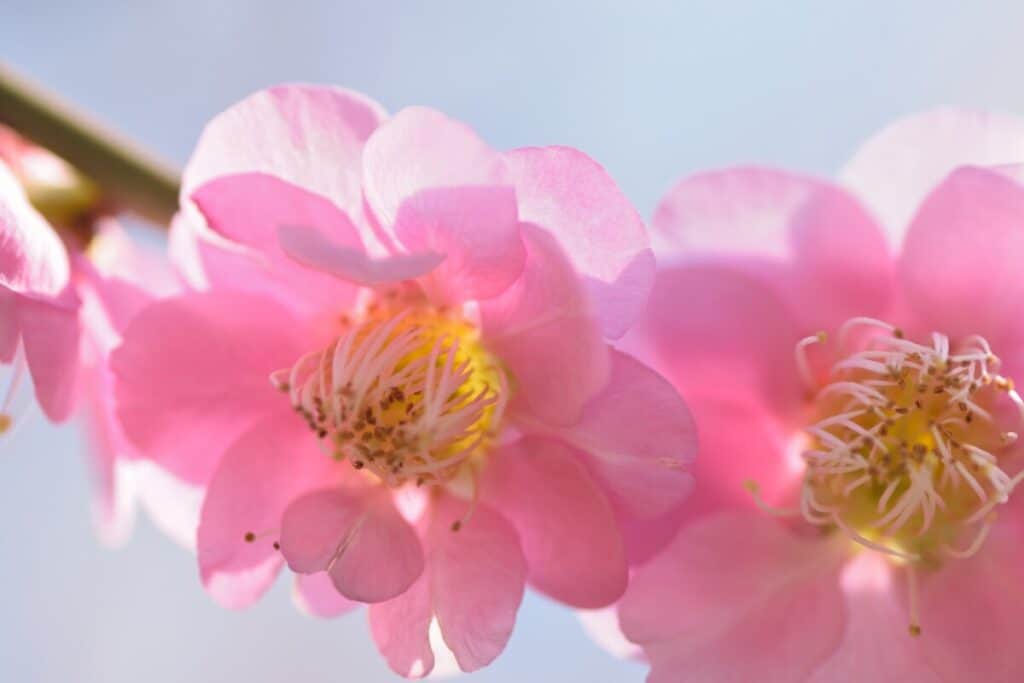
The flower symbolizes renewal, hope, and vitality, all of which are closely related to the blossoms perseverance to get out of the cold season and into the spring. However, the plum blossom holds importance not only in Japanese culture but also in many other Asian cultures.
The idea behind the blossom is that if something so beautiful and delicate can overcome the harsh winter conditions to bring new hope for the spring, then so too can we.
There are also different varieties of the plum, which are also called the Japanese apricot and ume. These varieties include yellow, white, pink, and dark pink.
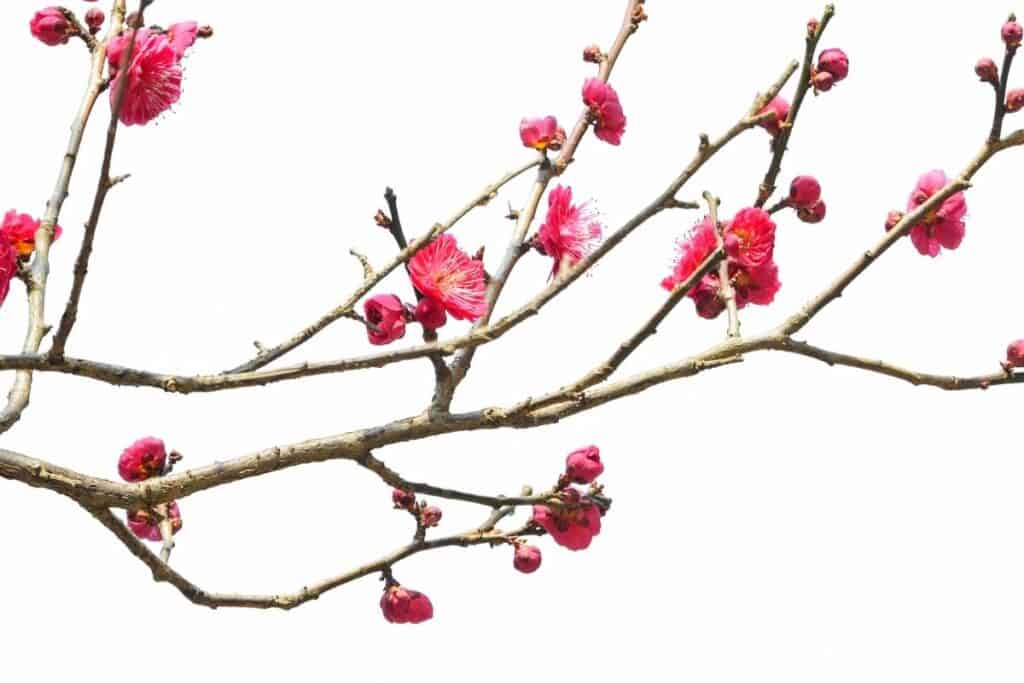
The flowers themselves are typically very rounded and most have five petals. However, like with the cherry blossom, there are some varieties that have more petals than the standard five.
The plum blossom tree was actually originally introduced to Japan from China in the 8th century.
Where are the best places to see the plum blossom?
If you are looking for the best places in Japan to see the plum blossom then you can quickly get overwhelmed with the amount of information out there as a lot of the best spots are particularly busy with tourists.
Here we will give you a guide to the best places to view the plum blossoms in Japan.
Hanegi park in Tokyo
Tokyo is often the first place that many people think to head to in order to see the spring blossoms and there is a good reason for this.
The parks in Tokyo offer some of the best viewing spots for plum blossoms and although they can often get quite crowded they are often worth the trip.
Hanegi Park in Tokyo is located in the Setagaya-Ku district in the southwest. There are over 600 plum blossom trees in the park, making it a sight to see in late winter.
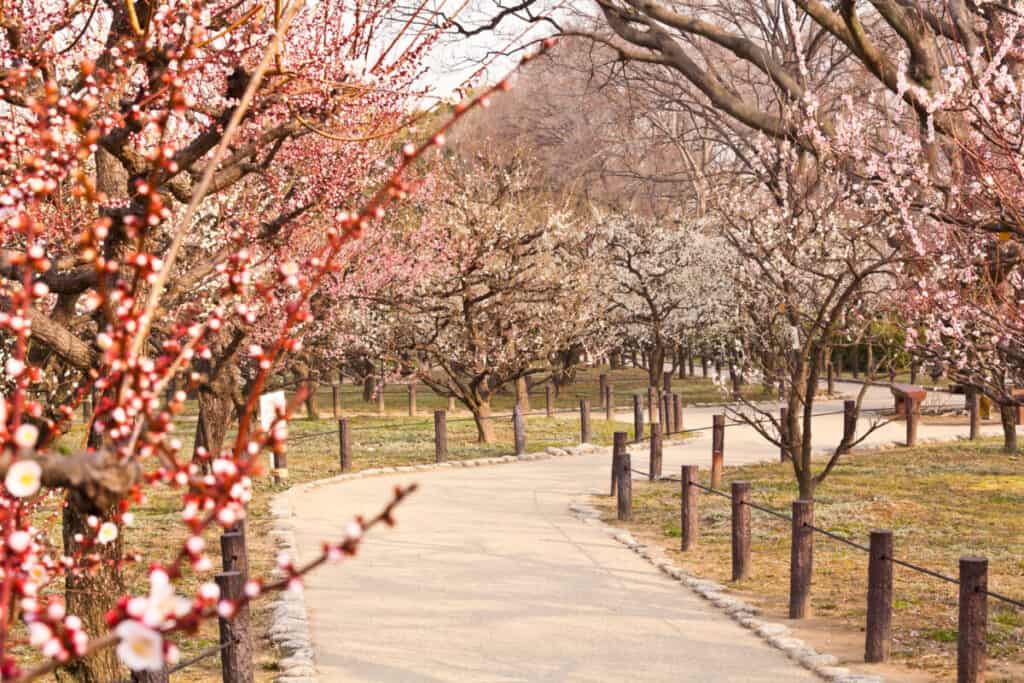
In fact, the park is so well-known for its plum blossom trees that a festival is held in honor of them every year from the middle of February until the beginning of March.
You can reach the park using the train system. To reach Hanegi park take the Odakyu train line from Shinjuku station until you reach Umegaoka.
Kairakuen in Ibaraki Prefecture
If you find yourself in the Ibaraki Prefecture then you are in luck when it comes to seeing the plum blossoms. This park is considered to be one of the three most beautiful parks in all of Japan, making it ideal for viewing the plum blossoms.
Kairakuen Garden Official Website
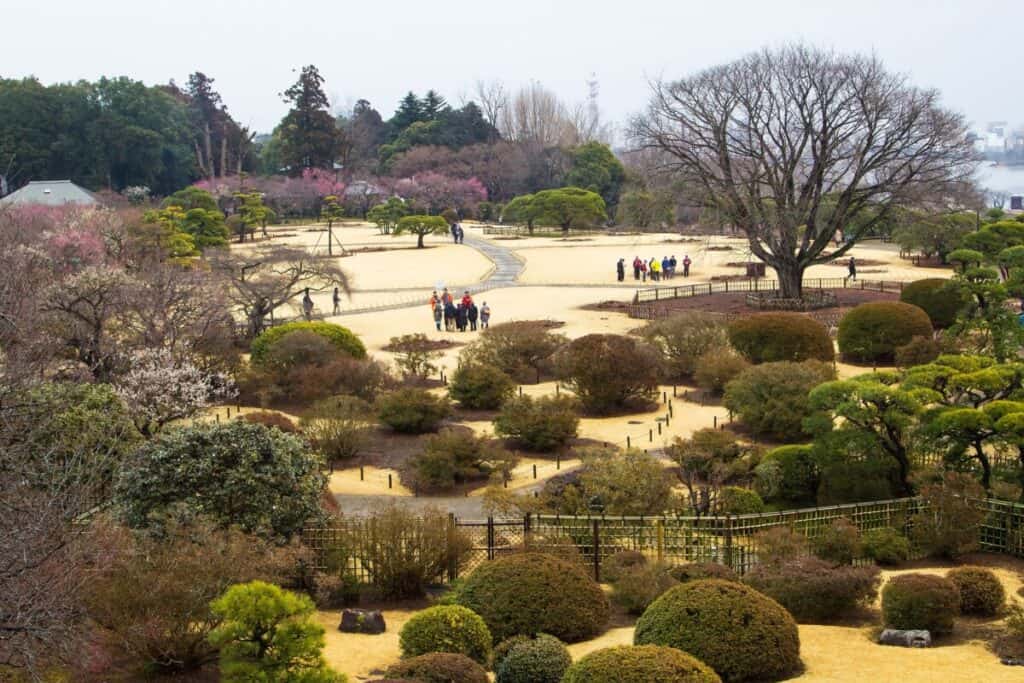
The park is home to more than 3000 plum blossom trees, meaning that in the spring months the park is decorated with beautiful and fragrant plum blossoms.
There is also a plum blossom festival held in this park and it runs from the middle of February until the end of March.
You can also reach this park using the JR train line. Simply take the Joban line until you reach Mito station. Once you arrive at Mito station you will then need to jump on a bus for a short fifteen-minute ride until you reach the park.
However, during the season there is a special train that runs from Mito station to the park.
Kitano Tenmangu in Kyoto
This is the most well-known viewing point for seeing the plum blossoms in the north of Kyoto, which is Japan’s former capital.
You are also able to reach this destination by public transport by taking bus number 101 from Kyoto station until Kitano Tenmangu.
Kitano Tenmangu Shrine Official Website
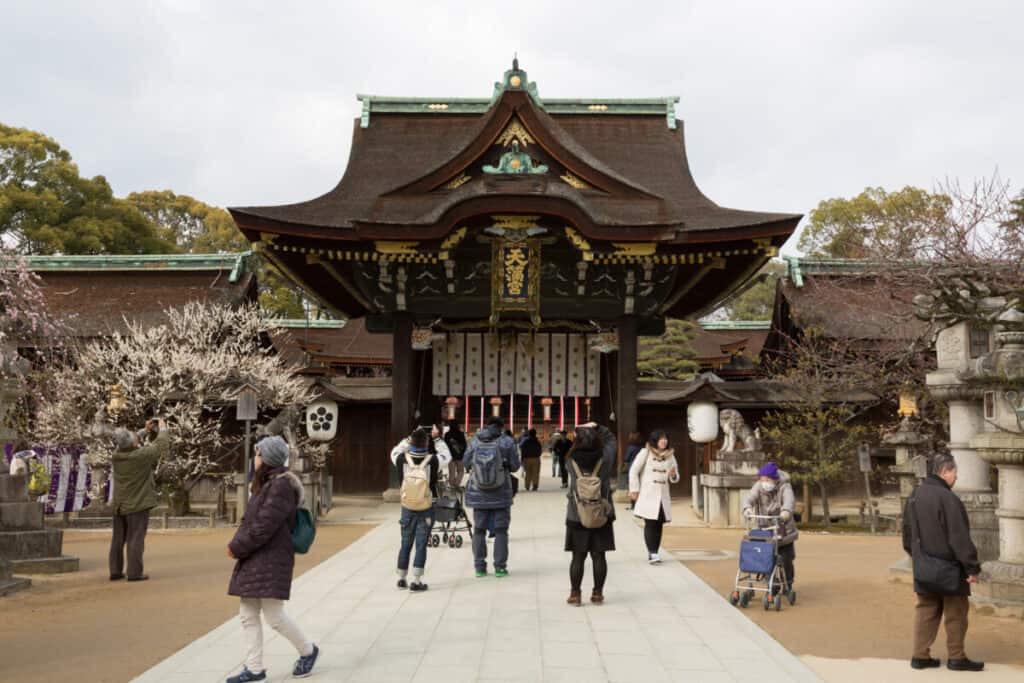
Kyu Shiba Rikyu in Tokyo
This part of Tokyo offers rest and tranquillity, giving you space to breathe within the busy and vibrant city of Tokyo It is also a great place to see the plum blossoms bloom in the spring months.
Kyu Shiba Rikyu Garden Official Website
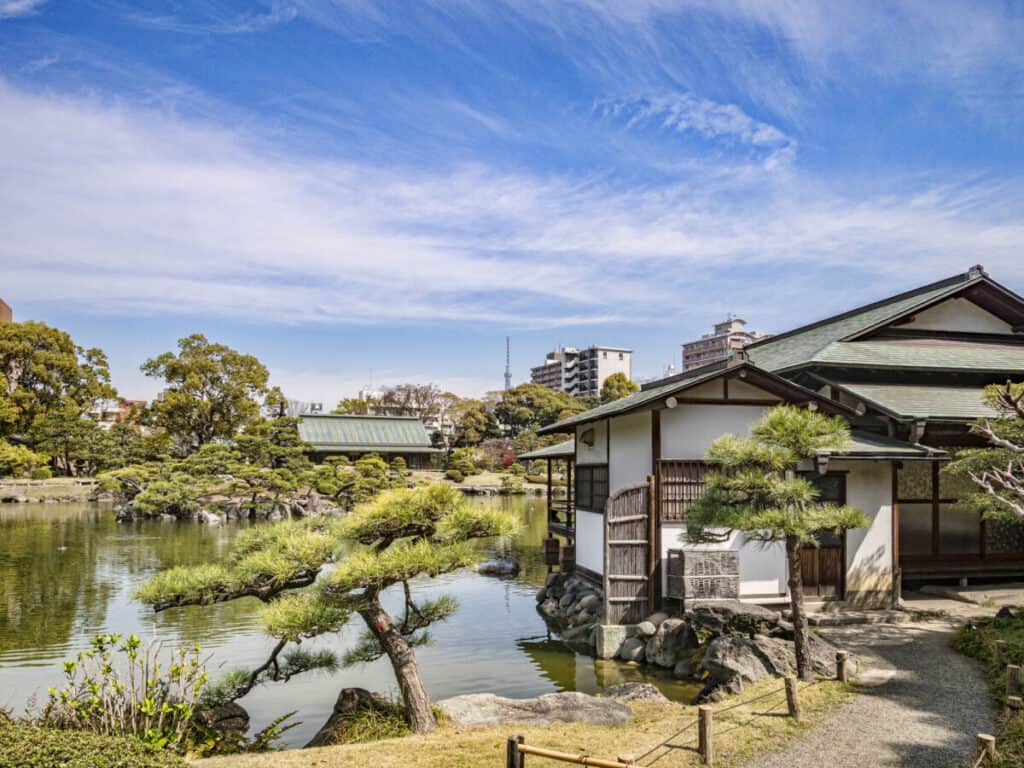
This space combines an urban landscape with a Japanese landscaped garden to fully merge the two sides and is decorated with beautiful plum blossom trees.
The park is located just a short walk from Daimon station and is popular with those wanting to see both the plum blossom trees and rare winter cherry trees.
Koishikawa Korakuen in Tokyo
Another fantastic plum blossom viewing point in Tokyo is Koiskikawa Korakuen which is actually one of the oldest gardens in Tokyo. It was constructed during the Edo period and remains an important part of Tokyo’s history to this day.
The garden is walled, making a clear distinction between the busy modern city and the calm historical park.
Koishikawa Korakuen Official Website
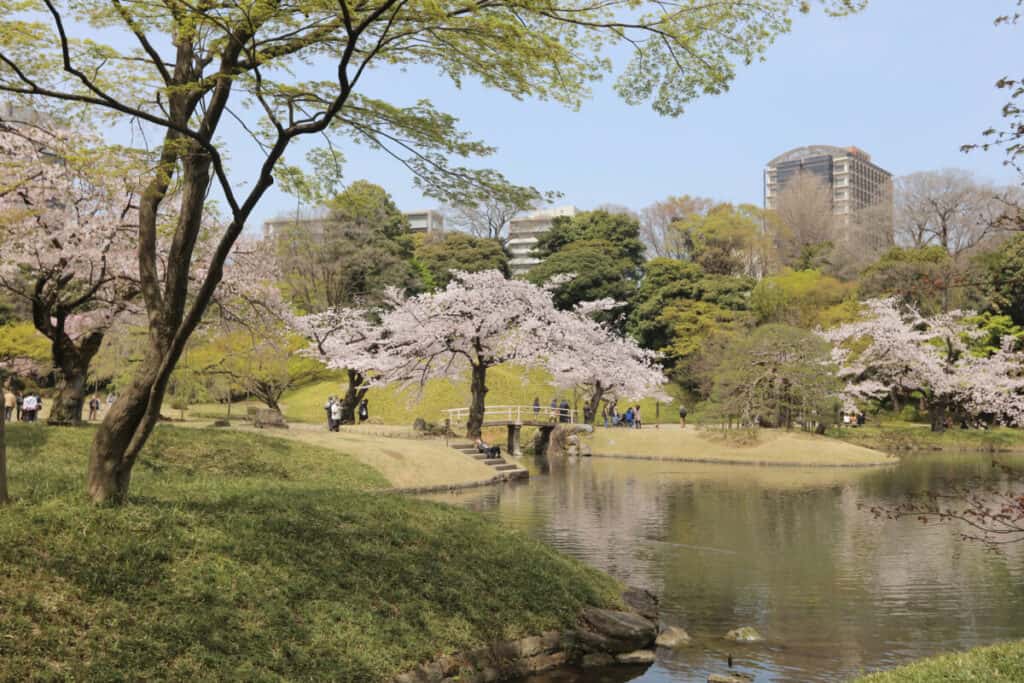
The park is famed for its grand weeping cherry tree that greets visitors as they enter the park, however, it is also popular thanks to its plum blossom trees which give the park a new lease of life after the long harsh winters.
The park is accessible by a short walk from Iidabashi Station.
Odawara Ume Matsuri
If you are truly after something unforgettable when it comes to plum blossom season then consider nowhere else other than Odawara Ume Matsuri.
Odawara Ume Matsuri Via Tripadvisor
Here you will find a staggering 35,000 white plum blossom trees which create the foreground of the picture, the background of which is Mount Fuji. There is no more perfect picture of Japan in spring than this.
There are a number of specific locations dotted around the area, such as Joshi Koen (Odawara castle park) and Soga Bessho Bairin.
Odawara Castle Official Website
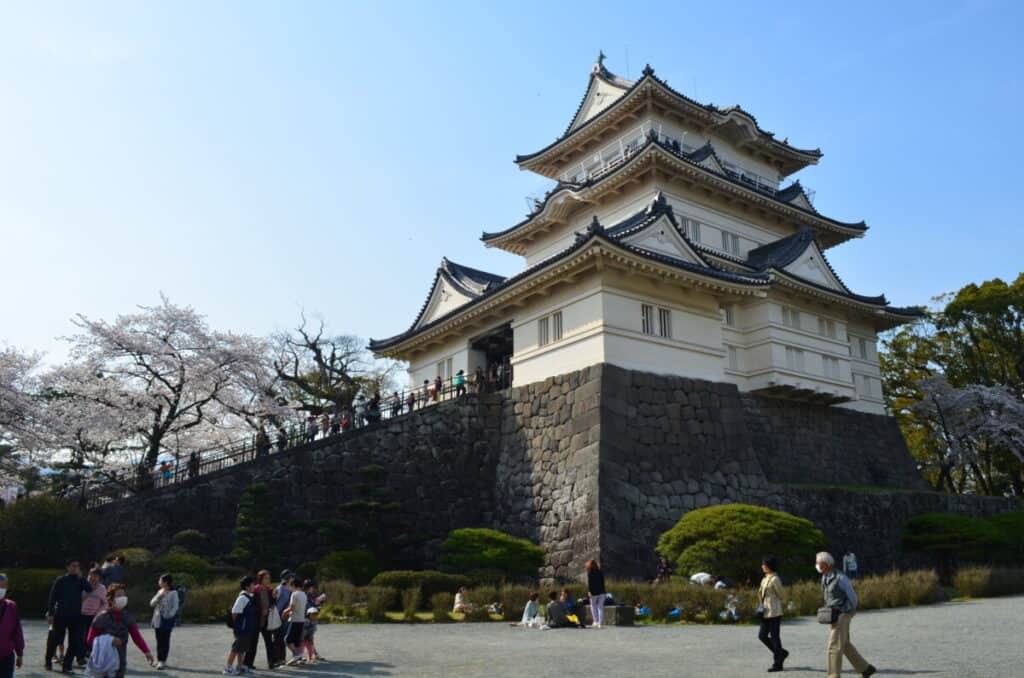
Every year there is a large plum blossom festival held here to celebrate the blossoming of the flowers and the arrival of spring. The festival runs throughout the entire month of February.
In addition to the magical sights, there are also a large number of fun activities for everyone, such as calligraphy and live archery performances.

